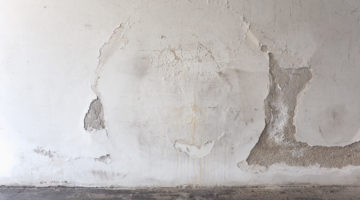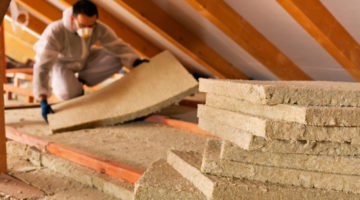
The Green Room: What happens when you put two sustainability experts in a room and ask them all about external wall insulation? The second instalment of our Insulation Masterclass Series is all about those pesky solid walls and how to keep them warm. We talk every external wall insulation – how much it costs, how to do it, and whether it’s right for you.
Internal Wall Insulation
Internal wall insulation is a great option in solid wall properties where external insulation is not practical or permissible; for example in listed buildings, conservation areas, where you wish to preserve the look of the building, where access restricts external work, or in flats. There are a couple of methods to insulate a solid wall internally and all will decrease the floorspace of a room (as per the thickness of the insulation board or stud wall you use). We recommend getting a professional in to complete this type of work, and you do not undertake it as a DIY job unless you are very experienced.
Cavity Wall Insulation
A home can lose as much as 35% of its heat through uninsulated external walls. By investing in cavity wall insulation, you can significantly reduce the heat loss from your home. The concept of insulating a cavity wall is really very simple – it involves filling the cavity between the two skins of masonry bricks with an insulating material, which slows the movement of heat through the wall. Maintaining the heat inside your home keeps you warm and cosy when you need to be. It also works in reverse by keeping your house cooler in the summer months.
Problem with Cavity Wall Insulation
In the 1980s, building regulations stipulated that insulation should be installed during the construction of new buildings. As soon as these regulations came into play, it became clear there were a huge number of slightly older properties that could also benefit from this type of insulation; however the only way to get the insulation into the cavity once the property was built was to inject it. Since the materials were cheap and the installation process was relatively simple, the Government really pushed the measure. Thousands of small installer companies popped up, knowing they could install the insulation in people’s homes and be well paid for the work. As a result, any property with an unfilled cavity was targeted, regardless whether it was suitable or not – so obviously issues occurred.
Read more:
An introduction to internal solid wall insulation
An introduction to cavity wall insulation
External Wall Insulation versus Internal Wall insulation
5 reasons to get cavity wall insulation
The Problems with Cavity Wall Insulation
Think we missed something? Do you have a different opinion?
Comment below to get your voice heard…











No Comments yet! Be the first one.